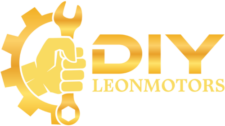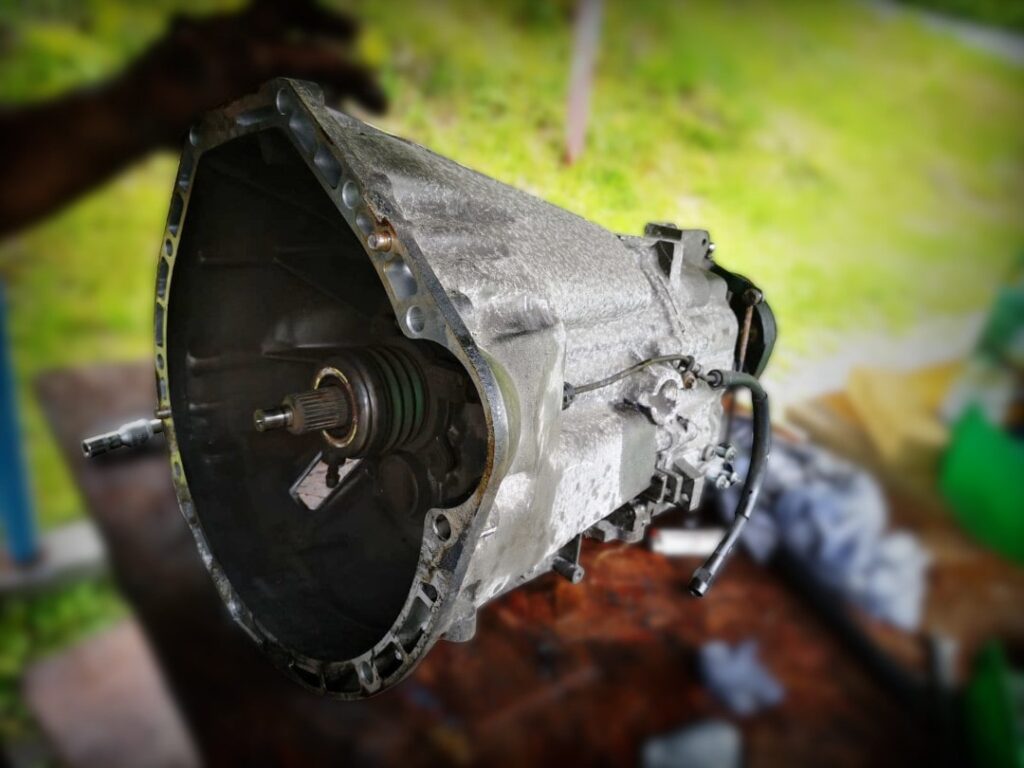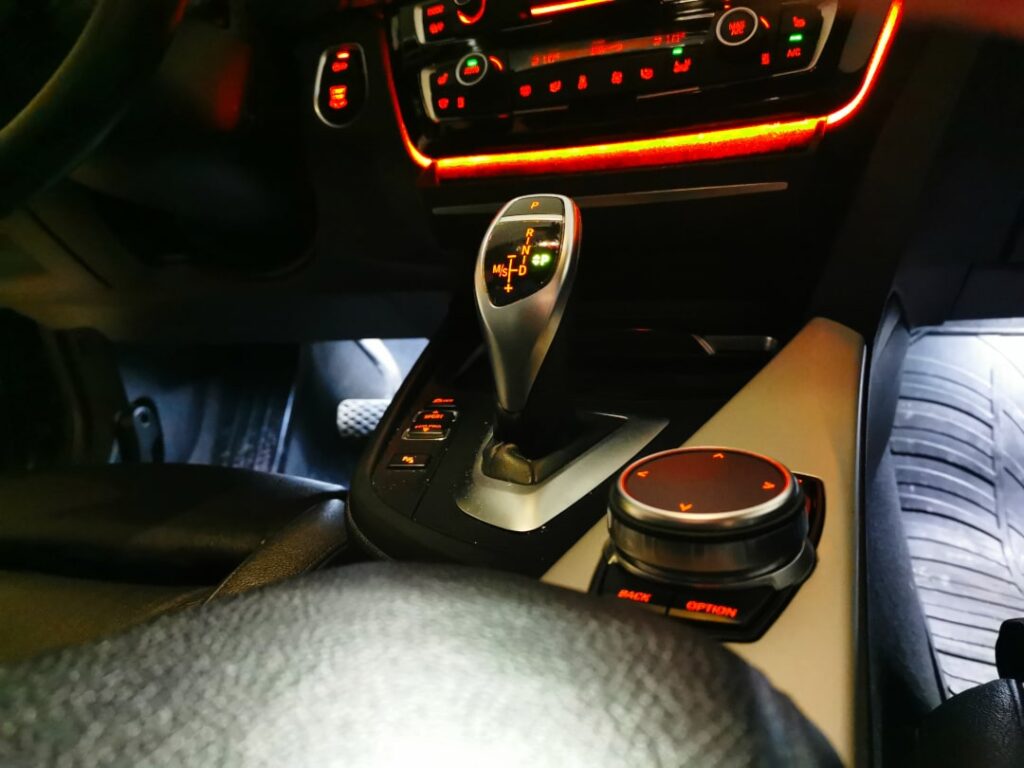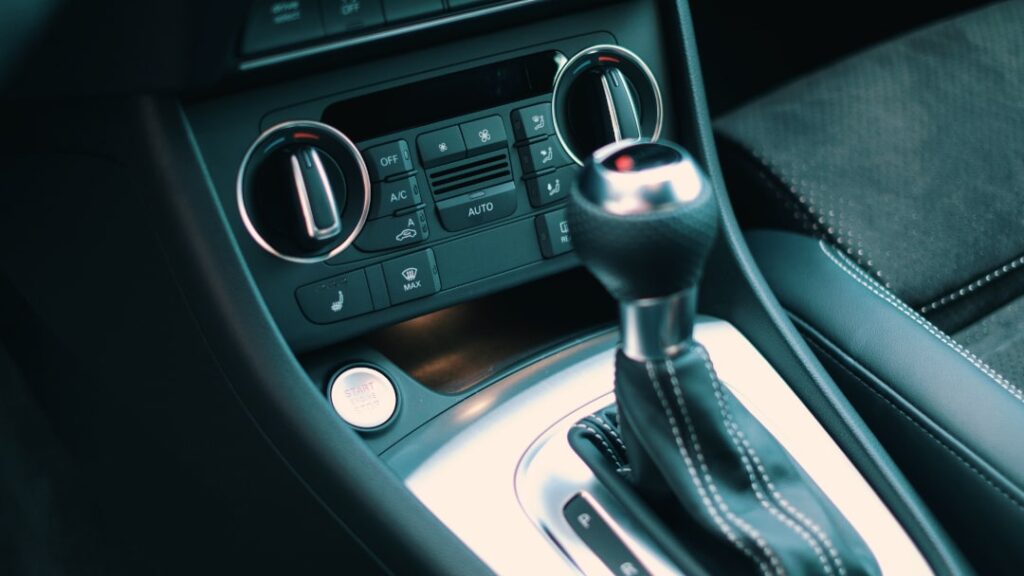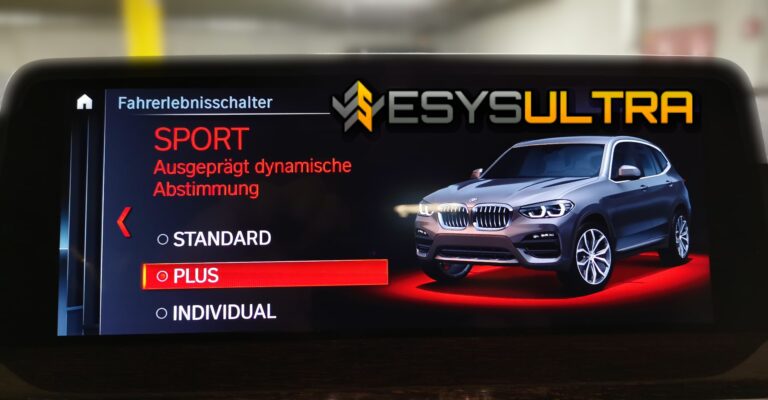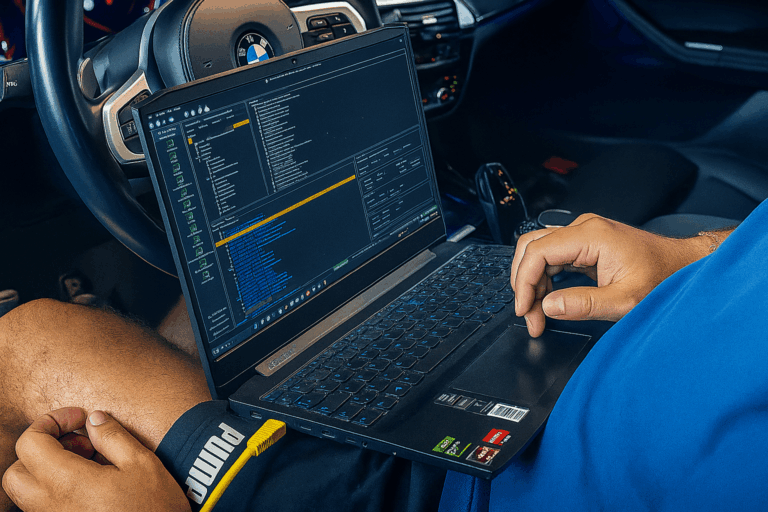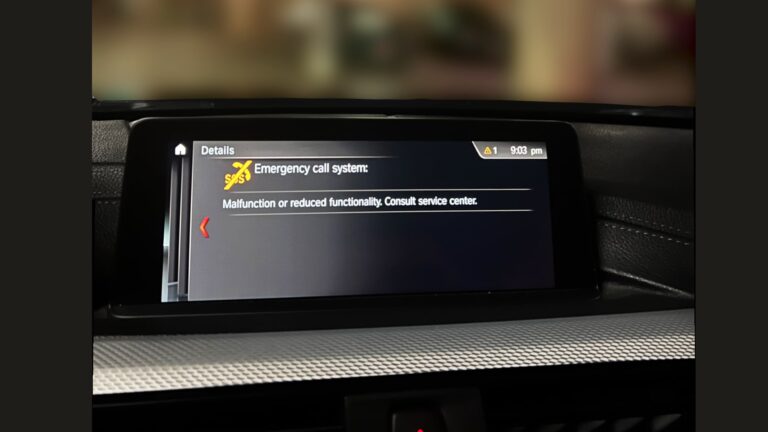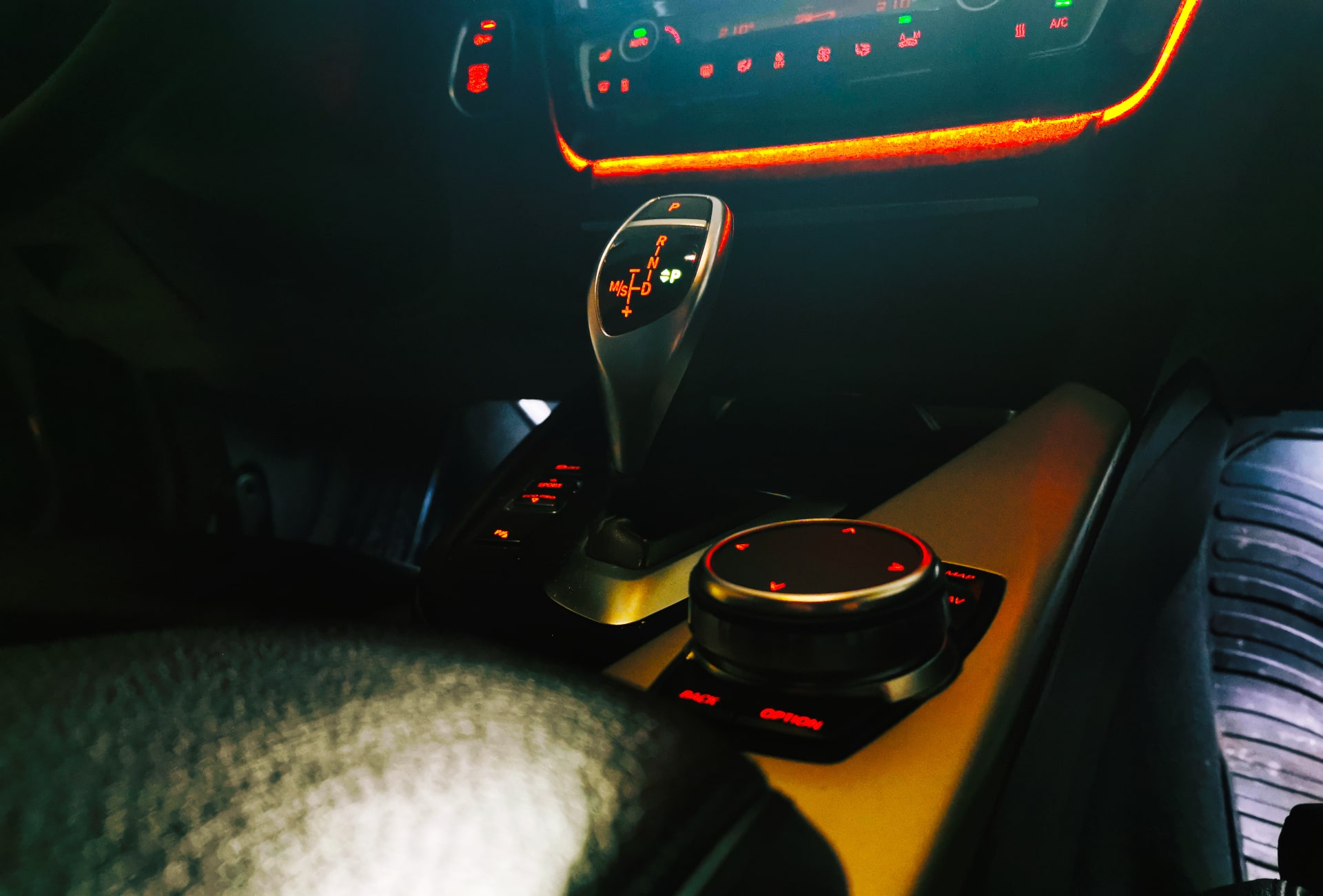
Overview of Transmission Types
Examples & Comparison
1) What Types of Gearboxes exists?
Roughly speaking, there are 5 types of transmission that are installed in cars today.
Names such as S-Tronic, Steptronic, DSG etc. come from the car manufacturers themselves. However, these names are only "synonyms" for the transmission types already mentioned above (plus a few extras). In this article, you can find out how these names are related and what the advantages and disadvantages of the individual transmission types are.
The Manual Gearbox (Manual Transmission)
As the name suggests, the manual gearbox is shifted manually by the driver. It has five to six gears, one reverse gear and is released by stepping on the clutch to change gear. Disengaging the clutch interrupts the power transmission between the engine and wheels and allows the driver to engage the next gear.
The transmission housing consists of a light metal alloy, in which the clutch is located. Inside the transmission, the gear wheels transmit the power of the engine to the driveshaft when the clutch engages. As the manual transmission is more robust and simpler than its competitors, it is often classified as more fuel-efficient and cost-effective. Although this transmission type is the least comfortable, the manual gearbox remains in high demand among many car enthusiasts and traditional drivers.
The manual gearbox has been and continues to be used by almost all car brands (especially European). Although the trend is increasingly moving towards automatic transmissions, the manual gearbox will not be leaving us any time soon.
➔ Pros & Cons: Manual Transmission:
The Automated Manual Transmission
An automated manual gearbox basically has the same structure as a manual gearbox. However, engaging and disengaging the clutch and shifting gears is "automated" here. Instead of linkages or cables, however, computer-controlled components are used. This means that the driver no longer operates the clutch and shifts gears. Although the programmed shift points and the lightweight design save fuel, the interruptions in traction during shifting are very unusual.
The automated manual transmission is being pushed further and further aside and is quite unpopular. BMW was the pioneer of this type of transmission with its Mini in the 1990s. The technology in general was mainly intended to be used in sportier small cars. However, it was not a success here and the automated manual gearbox is nowadays largely replaced by the dual clutch gearbox.
➔ Pros & Cons: Automated Manual Transmission:
The Torque Converter Automatic
The torque converter automatic is a transmission whose variations are the most widespread. It is also referred to as "the classic automatic transmission" and is one of the most popular technologies.
A torque converter transmission, also known as a torque converter, comes with 6 to 9 gears. A wear-free fluid coupling operates between the transmission and the engine. This clutch housing consists of a pump wheel, a turbine wheel and a guide wheel. At idle speed, the torque converter acts like a separate clutch and transmits just enough torque to keep the car moving when the brake is released. When accelerating, the engine initially turns faster than the transmission, which increases the torque enormously during acceleration.
The torque converter automatic transmission is sold by Audi, for example, under the name Tiptronic and is often compared with the S-Tronic (dual-clutch transmission) when making a purchase decision. You can find out how these brands relate to the transmission types below in Chapter 2.
➔ Pros & Cons: Automatic Torque Converter:
The Dual Clutch Gearbox (DKG)
The dual-clutch transmission is, so to speak, the biggest competitor to the torque converter automatic. The DKG is also an automated transmission, except that it has two clutches with two sub-transmissions. This enables the dual-clutch transmission to change gear extremely quickly without power interruptions. The reason for this is that the second sub-transmission has already engaged the next gear before shifting. While one clutch opens, the second clutch is already ready to engage with the pre-engaged gear.
The DKG is the sportiest transmission of all the types mentioned here, but gets minus points for comfort and fuel consumption. The efficiency is also slightly higher than that of the torque converter automatic, but is almost imperceptible to the human eye.
➔ Pros & Cons: Double-Clutch Gearbox (DKG):
The Continuously Variable CVT Transmission
This special type of transmission is clearly an oddity and is also known as the "transmission without gears". The CVT (Continuously Variable Transmission) is not sporty, but scores with its comfort. However, this special comfort takes some getting used to for many drivers. The continuously variable transmission simply lacks the sporty touch that many people can't imagine driving without.
The continuously variable CVT transmission is (as the name suggests) a transmission without shift points. The transmission changes gears in the same way as a chain drive, thus enabling "gear changes". The continuously variable transmission therefore transmits without shifting and thus enables a perfect transmission ratio at a constantly ideal engine speed.
However, the efficiency of this type of transmission is lower than that of the torque converter or the DKG due to the oil pumps. In addition, the "rubber band effect" and the uncertainty as to which gear is engaged bothers many drivers. However, manufacturers have now addressed this problem and simulate the gears using software. Instead of continuously changing the transmission ratio, discrete intervals are programmed to simulate shifting to the "next gear".
➔ Pros & Cons: Infinitely Variable CVT Transmission:
2) Transmission Types by Car Manufacturer (Designation)
Names such as S-tronic, Tiptronic, Steptronic etc. are manufacturer names for the different gearboxes. Some of them are even identical and simply have different software and names. In principle, however, the manufacturer names can be assigned to the types of gearboxes.
Theoretically, a Steptronic transmission is the same as a Tiptronic transmission. The difference is that the Steptronic comes from BMW and the Tiptronic from Audi. However, both are torque converter automatics with small specific characteristics.
In this table you can read the relationships between the gearbox types and the manufacturer names:
| BMW | AUDI | BENZ | VW | |
|---|---|---|---|---|
| Transducer | Steptronic | Tiptronic | 7G-TRONIC 9G-TRONIC | no ref. |
| DKG | DKG | S-Tronic | 7G-DCT 8G-DCT | DSG |
| CVT transmission | no ref. | Multitronic | Autotronic | Multitronic (Audi) |
Car manufacturer designations for different transmission types
3) Costs of the individual Gearbox Types
We have divided the costs into repair or replacement costs and acquisition costs (surcharge when buying a car).
However, the costs vary depending on the make and model of car!
➔ Costs for repair and replacement:
➔ Purchase costs (surcharge for car purchase):
4) What is the best Type of Gearbox? (Conclusion)
The best gearbox type depends heavily on the Driver and its Needs from.
If you prefer traditional, fuel-efficient and economical driving, while comfort is not important to you, your choice is more likely to be the manual gearbox.
If you love to gas up and want to be able to shift gears quickly, you are more likely to choose the dual-clutch transmission..
If comfort is the most important thing for you and you hate the jerking with every gear change, you can also consider a stepless CVT gearbox.
The torque converter automatic is the "all-rounder" among the transmission types, so to speak. The torque converter does not disappoint the sporty, economical and also the comfortable driver types. This is why the torque converter automatic is usually considered the best automatic transmission of all.
The reason for this is that the torque converter automatic has a bit of everything. Thanks to the WÜK and other controls, the efficiency is very good and really competes with the DKG. Meanwhile, the torque converter automatic consumes the same amount as the comparable manual gearbox. This type of transmission is also reliable and lasts a really long time. If we had to choose one type of transmission for the rest of our lives, it would definitely be the torque converter automatic transmission.
More Articles
BMW Sport Plus codieren: Fahrmodus freischalten – Anleitung
BMW Sport & Comfort Plus codierenFahrmodus freischalten – Anleitung BMW-Codierung leicht gemacht – In dieser Anleitung erfährst du Schritt für…
BMW Codieren Software Vergleich 2025 | ESys, BimmerCode & Co
BMW Codieren Software VergleichESys, BimmerCode & Co. Um einen BMW zu codieren gibt es mittlerweile unzählige Tools. Unterschiedliche Softwareanbieter bieten…
BMW Emergency Call System Error Battery Replacement | G-Series GUIDE
BMW Notruf Systemfehler?Lösung: Batterie wechseln! Der bekannte BMW Notruf Systemfehler (B7F341) tritt bei vielen BMW Fahrzeugen auf, egal ob E-Serie,…
